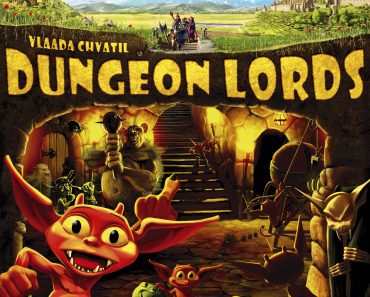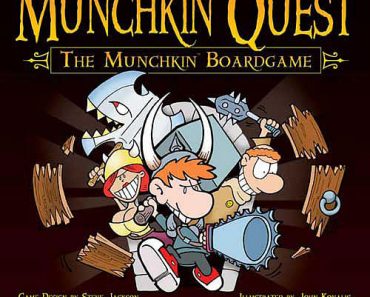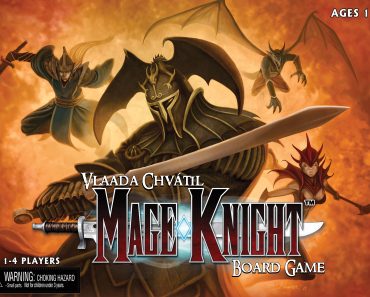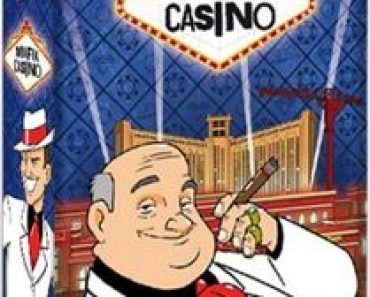Review
-
Game Rating
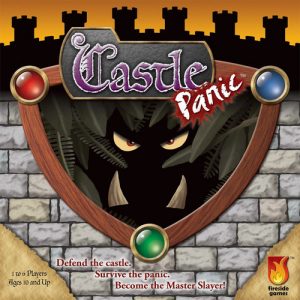
Introduction to Castle Panic
Castle Panic is a creative, tabletop spin on a sub-genre of video games known as “tower defence” or “td,” games. Castle Panic was released in 2009, created by Justin De Witt and published by Fireside Games.
This release fell just a year after the major boom in the popularity of tower defence games which also led to the success of massively popular video games like “Plants vs. Zombies”. The tower defence format, however, has roots all the way back to the 1980s, with the first recognisable tower defence game being “Rampart” from the 90s.
In addition, many games famous for other achievements in gaming had tower defence variants, such as “Warcraft 3” and “Starcraft”, both of which had prominent player bases for their tower defence variants and hundreds of versions of these variants.
Castle Panic, following in the tower defence spirit, is a cooperative game in which a loss for one player means a loss for the whole party. This can be very rewarding for many players, as it means that all players will stay in the game for as long as the team can work together.
In the standard play of the game, the player who performs the best during the game will be anointed the “master slayer” and will be the true winner of the game, but surviving the challenge at all is a rewarding victory nonetheless.
During the game, hordes of monsters generated by card draw and dice roll continuously rush in from the forest zone at the edge of the board game, seeking to destroy a central tower, and must be thwarted through careful strategy by the players.
Powerful boss monsters also make appearances, increasing the difficulty and adding additional layers to the offence that levies against the players. Players are granted many options for defensive strategy: they can trade cards, coordinate actions based on turn timing, and communicate freely.
There are a number of expansions to the game, though this guide will focus primarily on the base version of the game and its in-box rules variants. Interested players should be able to pick up the game and play right away after reading through this basic guide, which will include some strategies for play as well.
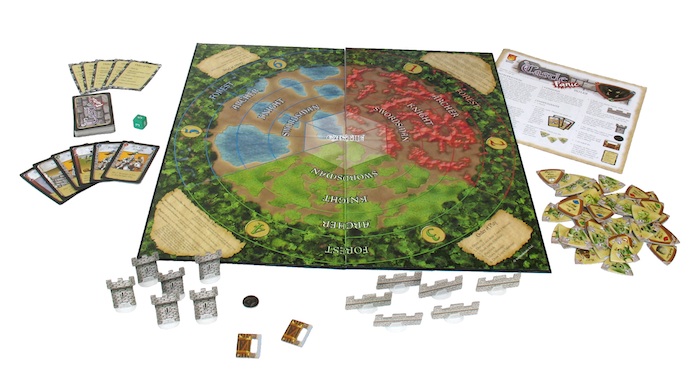
Components of Play and Number of Players
Castle Panic is flexible in regards to number of players; there is even a “solitaire” rules modification for players just looking for a tough, solo, strategic challenge. The game supports up to six players, though the official rules recommend four or more for the ideal play experience. The average game length seems to be about an hour.
Every Castle Panic box will contain a detailed play board and a number of plastic wall and tower pieces. Walls will act as a form of primary defence against monsters approaching the towers, which will be placed at the centre of the map.
There are 49 monster tokens included in the box, and all of them will be used every game, so interested players should keep a close eye on these pieces.
A deck of “castle” cards serve as the primary means for player action. In addition to these basic pieces, there are three tokens that indicate castle card based occurrences. A six-sided die will also be needed for play, though one is included in most boxes. The box also contains convenient order of play cards that remind players how turns progress.
The Castle Panic board is a circular set up with a series of rings expanding in size out from the centre of the board. Towers will always be placed at the centre of the map.
Each slice of the map is known as an “arc” and are numbered along the outside of the play board. The rings, from outside moving in are known as the “forest,” “archer,” “knight,” and “swordsman” rings. There are additional lines indicating the locations for placement of walls.
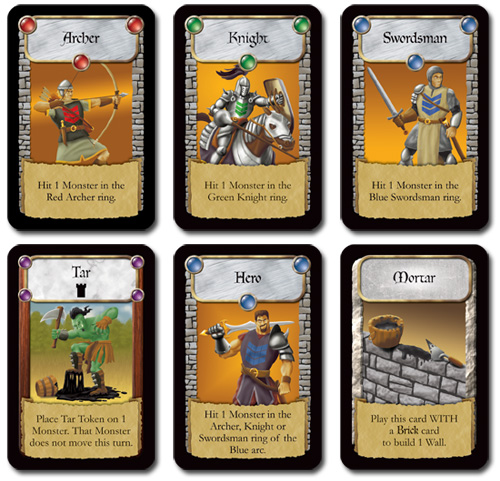
Setup and Gameplay
Thankfully, all versions of Castle Panic have the same rules for setup. Setting up the board involves placing the first threats of the game on the board, which allows for some immediate strategy and communication between players. To begin play, a tower piece must be placed in each of the highlighted spaces within the central “castle” ring. After the towers have been set, one wall piece should be placed on each line separating the Castle ring and the Swordsman ring.
Once walls and towers have been set, three goblins, two orcs, and one troll monster tokens should be drawn from the monster token pile. One monster should be placed in each arc of the archer ring. Players are allowed to decide together where the monsters should be placed, but only one monster will be place in each arc. Monster tokens have numbered corners and the highest number should be pointing towards the castle. Order of play cards can also be distributed at this time.
After monsters have been placed, the “castle” deck should be shuffled and then cards should be dealt according to the number of players in the game:
1. Two players = Six cards dealt
2. Three to five players = five cards dealt
3. Six players = four cards dealt
The remaining cards in the castle deck will serve as a draw pile, and a discard pile can be made next to it as the game progresses. Following the dealing of cards, monster tokens should be turned face down and jumbled into a monster pile. The “tar” and “fortify” cards can be set aside until their use is called for by a specific castle card.
Once all of these steps have been completed, the table is prepared to begin playing. Any player may go first and play will continue clockwise around the table from the chosen first player. Turns have six steps which have some very specific rules and must be done in the following specific order:
1. Draw up
a. Note: This phase is skipped on the first turn.
b. Players should fill their hands back to the initial number of cards dealt at the beginning of the game. This is the first action of every turn.
2. Discard and Draw
a. Players are allowed to “mulligan” a single card every turn. This means they can discard one card and draw a new card from the pile. This can be very helpful if a player’s hand is full with cards that do not fit the current strategy.
3. Trade
a. Before a player plays any cards, they are able to trade with one other player. In a game of two to five players, only one card may be traded. In a game of six players, two cards may be traded.
b. Players cannot give cards away for nothing. Trades must be in a one-to-one ratio.
c. Players cannot trade with more than one other player. Only one trade with one player can occur per turn.
4. Play
a. In the play phase, players will take concrete actions using the cards in their hand. Players may use as many cards as they please – there is no limit on number of cards used. These actions include attacks against monsters, status effects on monsters such as repositioning or slowing their progress, and rebuilding lost walls.
b. In order to attack a monster, the player must have a card indicating an attack in the ring the monster currently inhabits. A monster in the archer ring cannot be hit by a swordsman attack, for example. Monsters can never be damaged or hit when they are in the forest ring, and cards that allow monsters to be hit within the inner castle ring are very rare and valuable. Successful attacks will generally deal one damage, which can be tracked by rotating the monster token such that the next lowest number is facing forward.
c. If a player is able to slay a monster during their turn, they are able to claim its token as a trophy which helps add up to the “master slayer” title at the end game. Keep in mind that monsters killed by neutral effects do not belong to any player and are instead placed out of play in a discard pile.
d. Another turn action possibility is “slowing” a monster. A monster who is slowed will have the tar token placed on it. Monsters can be slowed within the forest, even if they are invulnerable to damage. The monster does not move by any circumstances until the next players turn. Normal monster movement and new monster population (explained below) will not affect the slowed monster.
e. Players can also build walls during their turn, so long as they have the necessary components from the castle deck. To build a wall, a player must use both a “brick” and a “mortar” card. Only one wall can exist on a specific space at any time (no doubling up is allowed with walls.) Walls are very important, as they slow monster movement and deal damage. Whenever a monster moves into a ring with a wall present, the monster must attack the wall and stop its movement. The wall is removed from the board after attack, but deals one point of damage to the monster. Players should be aware that while only one monster can take wall damage, all monsters currently in the space with the wall will stop their movement until the next “move monsters” phase.
5. Move Monsters
a. During this phase, the monsters will move towards the central ring. Monsters move one ring closer to the castle, unless they are already in the castle, at which point they will move one arc clockwise within the castle ring.
b. Once within the castle ring, monsters will attack the towers within. If a monster moves into a space with a tower in it, the tower is removed from the game and the monster takes one damage, similarly to attacking a wall. The monster will move clockwise and attack the next tower (if it is still standing) on the next “move monsters” phase. Again, in similarity to walls, only one monster in a castle space can take damage from the destruction of a tower, but all monsters in that specific space will stop their movement until the next “move monsters” phase.
6. Draw New Monsters
a. Two tokens should be drawn during this phase and be turned up one at a time. If it is a goblin, orc, or troll token, the player should roll the die and place the monster in the forest ring of the arc that matches the number rolled.
b. It is possible to draw a “Boss Monster” or a “Monster Effect” during this phase as well. Boss monsters move like regular monsters but have special effects outlined below:
i. Goblin King
1. When placed on the map, loyal goblins follow along with him. Once the goblin king has been placed by die roll, draw and place 3 more monster tokens.
ii. Orc Warlord
1. Once the orc warlord has been placed in the forest, immediately move all monsters (including the warlord) in arcs which have a number colour matching the arc the warlord was placed in (red, blue, or green.)
2. Monsters in the warlord’s matching arc colour that are within the castle move clockwise.
iii. Troll Mage
1. After the troll mage is placed, all monsters on the board including the troll mage move one space forward or one space clockwise if they are in the castle already.
iv. Healer
1. Once the healer is placed, all monsters on the board heal one point of damage. Full health monsters are not affected by this.
7. End of Turn
a. This phase simply indicates the beginning of a new round. No actions are taken during this phase.
There is one special effect token that bears further explanation here. This token is called the “Giant Boulder” token. When this token is drawn, the die should be rolled to determine which arc the boulder will roll through.
Once this is determined, the boulder begins to roll. It destroys all monsters in its path, including creatures in the forest.
These monsters are discarded and do not belong to any player’s trophy count. The boulder only stops rolling once it strikes and destroys either a wall, fortify token, or a tower. If no towers, walls, or fortifications stand in the way of the boulder, it will roll out the other side of the castle and continue through the opposite arc.
Victory and Loss
Victory for the players occurs when all 49 monsters have been defeated (by one means or another!) Once all monsters have been slain, the players should tally their victory points as follows:
1. Boss Monsters = 4 victory points
2. Trolls = 3 victory points
3. Orcs = 2 victory points
4. Goblins = 1 victory point
The player with the most victory points is considered the “Master Slayer” and therefore the true victor of the game. In the case of a tie, the player with the most actual tokens becomes the Master Slayer. If it is still a tie, the official manual suggests a duel at dawn.
However, a loss for all players will occur if every tower piece within the castle ring is destroyed. In this way, Castle Panic encourages players to put cooperative play over competition for the Master Slayer position.
Castle Panic Strategies
While there are a lot of ways to win the game, there are some key ideas to keep in mind:
1. Don’t be afraid of trading. Trading allows for on-the-fly adjustments to strategy as the game board changes, and it changes on every players’ turn!
2. Players should keep a close eye on which rings their cards effect. It can be a deadly blow to waste a strong ability, only to have more monsters move into that ring a moment later.
3. Work together and prioritize cooperation. Everyone loses if the towers fall. That said, watching monster’s health and value is important for securing the position of Master Slayer, so if a player has a choice between two targets of equal threat, they should choose the target of hire value to slay.
4. Fortifying inner walls has great value, especially when the giant boulder rears its ugly head. The boulder will stop immediately at a fortified wall, but it will still kill all the monsters between its starting point and the fortified wall. This can really swing a game in the favor of the players.
5. Don’t neglect rebuilding walls. These not only slow monsters, but deal damage. Walls are essential to the player’s survival.
Major Variants to Play
Castle Panic has some rather exciting variants which can be played directly out of the standard box. The first of these is the “Overlord” version of the game. In Overlord, one player becomes the lord of all the monsters and fights against the players in the castle. Defender player turns remain mostly same, except that they terminate after the “play” phase. After the play phase of each player’s turn, the overlord takes a turn. The Overlord player does not receive any cards. Instead, they will have a steady hand of 3 monster tokens. The Overlord player’s turn proceeds as follows:
1. Move Monsters
a. The Overlord moves monsters just like in the normal version of the game, one ring towards the castle, or one arc clockwise once in the castle.
2. Draw Up
a. The Overlord refills their hand to 3 monster tokens.
3. Play Monsters
a. The Overlord can play monsters in two different ways.
i. Choose one monster and place it in any arc of the forest ring they desire.
ii. Choose two monsters, two monster effect tokens, or one of each, then roll the die for each token to determine which arc they will be placed in. Monster effects resolve as usual.
Overlord players should be aware of the following restrictions:
1. The Overlord cannot choose which arc a giant boulder token rolls through. They must roll a die as usual.
2. If an overlord uses a “draw 3” or “draw 4” monster tokens effect, they add that number of tokens to their hand and can then play the same number of tokens that they drew. However, they do not have to play the exact tokens drawn. This is an opportunity for strategy in monster choice. All monsters added to the board by this effect must be done so by die roll and not by overlord choice.
3. The “castle” and “missing” cards prevent the Overlord from drawing or playing new monster tokens, but the Overlord can still move monsters as usual.
Another interesting variant is the “solitaire” version of the game. This variant is very simple to set up, but very difficult to win, so only veteran players are likely to enjoy this variant.
In order to play this variant, simply deal the solo player six cards. Instead of the usual draw and discard action, they can draw and discard two cards.
In addition to the “overlord” and “solitaire” versions of the game, there are two other variants of note. “A Man’s Home is His Castle” is a version of the game where each player is designated a “home” tower at the beginning of the game. If that tower falls, they are bumped out of the game. This variant may be ideal for very competitive groups.
The “Under Construction” variant adds an interesting challenge in that it starts the game with no walls constructed whatsoever. Players will have to focus on building up defences manually without that usual starting bonus.
Additional minor tweaks to the game can be found in the official handbook, but were not significantly different to mention here. Interested players should be aware that there are multiple expansions to the game that radically alter play, adding wizards, siege weapons, and even an “Ultimate Boss” monster known as the “Dark Titan.”
There are also numerous overhauls of the game such as Dead Panic which is a zombie/survival themed version of the game and Star Trek panic which has players rushing to complete space-themed missions before their starship is destroyed.
Additional Resources
If that wasn’t enough information for you, Fireside Games have released a 12:08 video on YouTube on ‘How To Play Castle Panic’.
I’ve added the video below so you can get even more ideas and clarity on playing this fantastic game.
